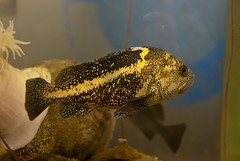NOAA Sea Grant has announced a funding opportunity for its Aquaculture Research Program 2012 to support the development of environmentally and economically sustainable ocean, coastal, or Great Lakes aquaculture.
Priorities for this FY 2012 competition include: Research to inform specific regulatory decisions; Research that supports multi-use spatial planning; and Socio-economic research targeted to understand aquaculture in a larger context. Proposals must be able to express how the proposed work will have a high probability of significantly advancing U.S. marine aquaculture development in the short-term (1-2 years) or medium-term (3-5 years).
To view the full announcement Go to www.grants.gov and perform a basic search using the Funding Opportunity Number: NOAA-OAR-SG-2012-2003249.
This is a two-stage competition, with preproposals and full proposals. Each stage has specific guidance and deadlines, stated in the announcement, with Preliminary Proposals due 2/7/2012, and Full Proposals due 4/17/2012. Applicants must submit a preproposal in order to be eligible to submit a full proposals. Preliminary Proposals are to be submitted directly to the National Office via e-mail.
Pay careful attention to the instructions and contact Sarah Kolesar, Research Coordinator for the Oregon Sea Grant Program (sarah.kolesar@oregonstate.edu, 541-737-8695) as soon as possible to discuss proposals.



